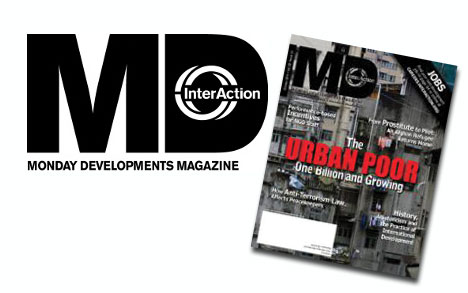Retrieving the Past:
History, ahistoricism and the practice of international developmentNovember 29, 2010

To insist that international development professionals should be aware of history seems like a statement of the obvious.
There may be reasons why aid professionals overlook history. High-pressure demands and short time horizons prevent anything more than perfunctory acknowledgement of the past. When USAID launches an initiative, it is often reacting to immediate political exigencies and short-term fiscal allocations. Needs assessments rarely delve back more than three to five years, the typical length of an aid project. The demand for prompt, measurable results encourages the short-term accomplishment of superficial tasks—“quick wins”—over long-term but deeper transformations. The combination of political pressures, bureaucratic demands and a technocratic culture enforces a mechanistic approach to development that marginalizes concerns for the past.
The principles of historical analysis—placing events in a wider context, tracing change through time and considering multiple perspectives—could help transcend the tyranny of the present and reveal broader trends. Underdevelopment is not a mere static state; it is a product of long term policies and trends. Failure to consider the historical experience of poor communities may turn a technically sound intervention into a social disaster. As historian Margaret MacMillan warns, “[i]f you do not know the history of another people, you will not understand their values, their fears, and their hopes, or how they are likely to react to something you do.”
USAID democratization efforts in Eastern Europe illustrate some of the dangers of ahistorical development practice. After the Cold War, American aid programs sought to promote economic restructuring and civil societies in Eastern Europe. USAID planners maintained that Communist regimes had stifled independent civil societies and that democracy required citizens to be weaned from government welfare.
To encourage political engagement, USAID supported the founding of non-governmental organizations (NGOs) that could advocate on behalf of citizens. Yet project planning did not address deeper regional histories of civic activism. Greater historical insight could have revealed distinctions. The northern states, for example, have a significant history of civic engagement. Southeastern Europe, by contrast, had little tradition of civic autonomy and few civil society groups. When the strategy predictably stalled, implementers were often blamed. In Bulgaria and Croatia, for example, grantees made up of former apparatchiks embittered younger program affiliates. While historical analysis would not have prevented all antagonism, it could have forewarned implementers of local sensitivities and disputes.
As democratization efforts expanded in Azerbaijan, the apparent success of Eastern Europe’s post-communist transition offered a seductive model for project planners. Azerbaijan was ill-suited to a Polish or Czech-style transition. Donor democratization efforts not only failed to foster political reform but at times exacerbated stratifications of wealth and power. Unsurprisingly, Azeri informants complained that donor policies lacked a community base, ignored citizen activity outside of official frameworks, and fostered hierarchy and corruption.
Ultimately, aid professionals will only consider systematic historical analysis if they know how to apply it and what difference it will make. Practical applications include:
- Trend and coalition analyses that chart the relation between current aid challenges and evolving trends; identify development tactics used in the past and the preconditions for their application; and map local alliances, available social resources and potential political obstacles. It matters enormously if a particular tension is centuries old or of recent vintage, especially if there are people who remember other ways of doing things.
- Consultation with elders that incorporate questions about the past so as to understand local perspectives, cultural constraints and development options.
- Impact analyses conducted several years after a project ends (not simply as the closing activity) to reveal lasting effect.
In the end, the proposal to rejoin the present with the past is simply a call for development to embrace its own character as history in the making.
Michael Gubser is an Assistant Professor of History at James Madison University. Jerrold Keilson is Creative’s Vice President and Director of Planning and Development. This article was excerpted from a longer article that originally appeared in the October 2010 issue of Monday Developments Magazine, www.mondaydevelopments.org.
